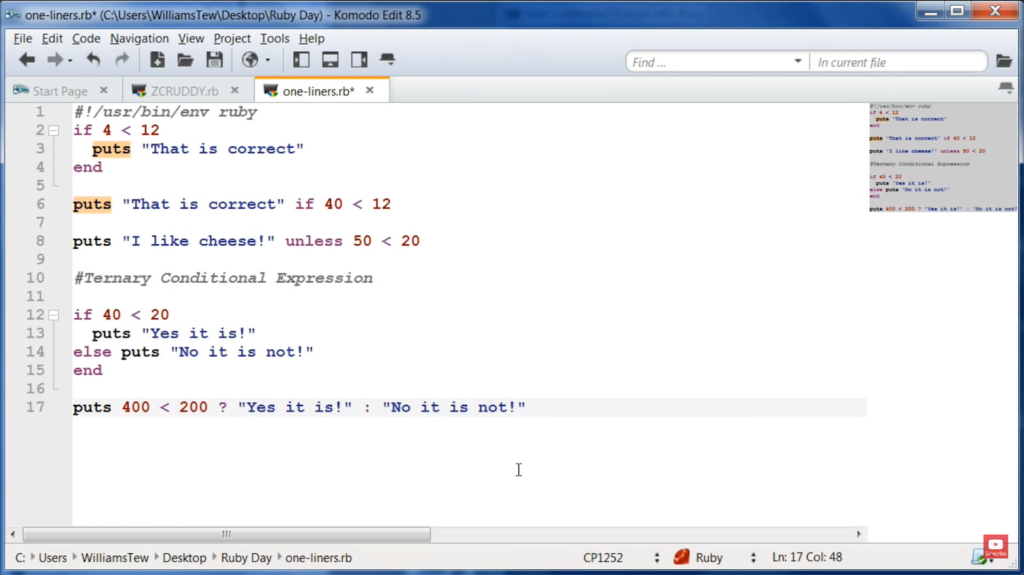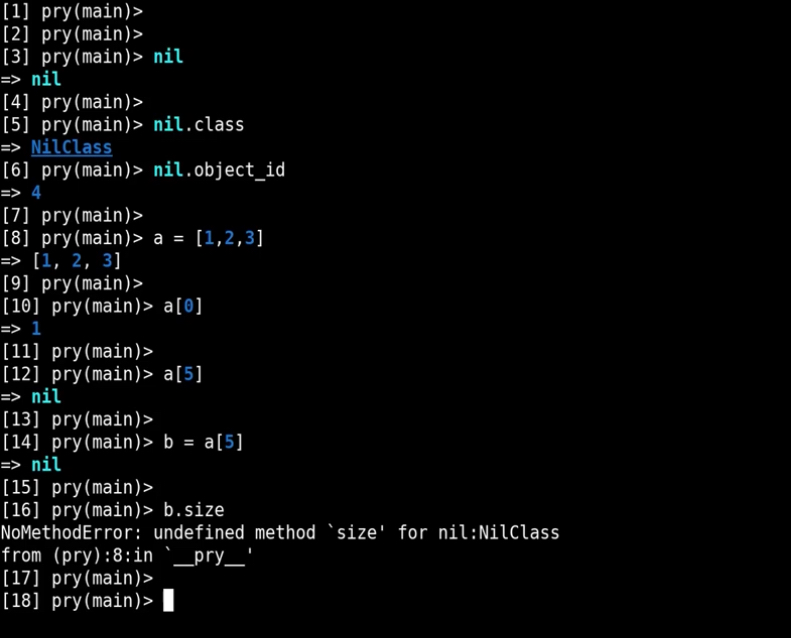Understanding the Ruby Ternary Operator
As the name suggests, the Ruby Ternary Operator is a special operator in Ruby that works with three components. Its name originates from the Latin “Ternarius,” meaning “composed of three items.” The Ternary operator, in its essence, is a simplified or concise version of the if-else construct.
Below is an illustration:
# Traditional If-Else Construct
if apple_stock > 1
:eat_apple
else
:buy_apple
end
# Ternary Operator Equivalent
apple_stock > 1 ? :eat_apple : :buy_appleThe second snippet achieves the same task as the first one but does so with a simpler, more compact syntax. But how exactly does this work, and what is the correct syntax usage? Let’s delve deeper into the inner workings of the Ternary Operator.

A Blueprint for Constructing Your Own Ternary
To better understand how to construct your own Ruby Ternary Operator, let’s create a blueprint. A template, so to speak.
Here’s the basic structure:
condition ? true : false
- The first element in the Ternary Operator is your condition – the statement or case you want to evaluate for its truthiness;
- Secondly, we have the ? character. This character is how Ruby recognizes that you’re employing a Ternary Operator;
- Following this, the next element is the code that executes if the condition you specified is true;
- Next, we have :, another syntax character acting as a separator between the true and false outcomes;
- Finally, we have the bit of code that runs if the condition evaluates as false.
Here’s an example:
"chocolate".size > 4 ? "More than four characters" : "Less than four characters"In this example:
The condition is "chocolate".size > 4
If true, it outputs "More than four characters"
Otherwise, it outputs "Less than four characters"Remember, the ? character is crucial in every Ternary expression, even if the method name ends with a ?.
For instance:
"".empty? ? "Yes" : "No"It’s a common mistake to forget this, so always be attentive when coding with Ternary Operators.
The Anatomy of Complex Ternary Operators
While the Ternary Operator is renowned for its simplicity, it also has a complex side. If used incorrectly, it can lead to complicated outcomes or even syntax errors.
For instance, you can assign the result of a Ternary Operator to a variable like this:
a = 10 > 5 ? "yes" : "no"This is straightforward. However, problems can arise when your possible outcomes include space characters:
10 > 5 ? (puts "yes") : (puts "no")In this case, the parentheses are essential to prevent SyntaxError. While it adds a layer of complexity to your code, it’s required to maintain the readability and stylistic consistency of the Ternary Operator.

Ternary Operators & Operator Precedence
Operator precedence is another crucial factor to consider when using Ternary expressions. Different operators in Ruby (and in almost every other programming language) have varying levels of priority. For instance, multiplication is evaluated before addition and subtraction in arithmetic operations. Similarly, the method call (<< and size) in Ruby takes precedence over the Ternary Operator.
For instance:
[].tap { |a| a << "ccccc".size == 0 ? "empty" : "not empty" }
# [5]In the above example, instead of the expected “empty” or “not empty,” we got 5. This behavior is due to operator precedence.
This issue can be resolved using parentheses:
[].tap { |a| a << ("bbbbb".size == 0 ? "empty" : "not empty") }
# ["not empty"]This example highlights the importance of understanding operator precedence when writing Ternary Operators.
When to Use the Ruby Ternary Operator
Knowing when to use the Ruby Ternary Operator can greatly improve the readability and effectiveness of your code. The Ternary Operator shines in situations where you have straightforward, simple conditional statements. It allows for a clean, concise way to write these conditions that are instantly understandable to anyone familiar with Ruby.
However, when dealing with complex, nested, or multi-step conditions, the traditional if-else construct is often a better choice. This is because the Ternary Operator can quickly become complex and confusing when used in more elaborate scenarios.
Ternary Operator Pitfalls and Common Mistakes
Despite its simplicity, the Ternary Operator can sometimes lead to unexpected results or tricky bugs if used incorrectly. Common mistakes include forgetting the ? after the condition, incorrect placement of parentheses when handling complex conditions, and misunderstanding of operator precedence.
Learning to recognize and avoid these pitfalls can significantly enhance your efficiency and confidence when working with the Ruby Ternary Operator.
Conclusion
Mastering the Ruby Ternary Operator can significantly streamline your coding process, offering a compact substitute for traditional if/else constructs. However, it’s crucial to remember that while it excels at simplifying straightforward conditions, it can get convoluted when applied to complex scenarios. Also, don’t forget the important role of ‘operator precedence’ in determining the ultimate outcome. Like any tool, it’s efficient when used judiciously and in appropriate circumstances. The ultimate goal should be the clarity and efficiency of your code. So, keep practicing with various examples to sharpen your understanding and to leverage this powerful operator effectively in your code.


